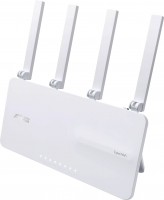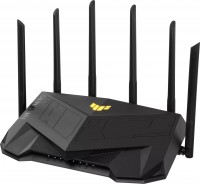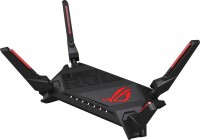Wi-Fi Equipment Asus series ZenWiFi (MESH systems)
Asus ZenWiFi
If Asus Lyra routers are more of a middle class and cannot boast of advanced features, then ZenWiFi models are able to satisfy a variety of Wishlist. For example, the popular ZenWiFi AX model is equipped with six antennas at once and is able to independently cover an area of 300 square metres. Its total throughput can reach an impressive 6600 Mbps, and an advanced quad-core processor is used for this goodness to work correctly. In contrast to Lyra routers, which are designed for use in apartments, devices from the ZenWiFi series are better suited for private homes, offices and open-airs where you need to provide a large network coverage.
 |
Most Asus ZenWiFi devices are able to work in Wi-Fi networks of the sixth generation with all the consequences, support MU-MIMO and Beamforming technologies and have several gigabit LAN ports on board at once. Depending on the specific model, the bandwidth can range from 1201 to 6600 Mbps. In the latter case, we can safely talk about streaming in 4K or using services a la GeForce Now with a minimum level of delay. Additional features may include a built-in LTE modem, AiProtection Pro information security system and a voice assistant. As for the range, the sale is usually dominated by single routers and paired kits. ZenWiFi sets consisting of three routers are not very popular, because for most people a coverage area of 300-50 square metres is enough for the eyes.
An additional convenience of using the ZenWiFi system is that the network setup is done once. Since all nodes of the system are connected to each other, but at the same time they are independent devices, they are automatically synchronized with each other, immediately transferring network settings. Therefore, the user needs to set the network name, password and other settings once (note: this can be done in a mobile application or web interface), after which the routers will transfer the settings to each other and the network will go into active mode. Unlike more affordable mesh systems, ZenWiFi routers allow you to use either one name for the entire network, or separate names for each unit.




